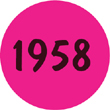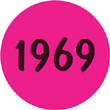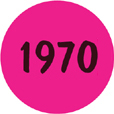

![]() ads happen, and no one can predict them. Why would people storm the toy aisles for a puppet that you can tickle? Or fly to Europe to get a doll that looks like a head of cabbage? Or bid thousands of dollars on eBay for a nine-inch plastic toy with big hair and an impish smile?
ads happen, and no one can predict them. Why would people storm the toy aisles for a puppet that you can tickle? Or fly to Europe to get a doll that looks like a head of cabbage? Or bid thousands of dollars on eBay for a nine-inch plastic toy with big hair and an impish smile?
The thing about fads is that you really never know where they’re going to come from, when they’re going to hit, and how long they’re going to last. Usually, however, most toy fads burn themselves out in less than a year.
One of the first toy fads of (relatively) modern times was the Shirley Temple doll. Even back as early as 1934, long before the days of the TV ad and the big box toy store, people lined up around the block for days to get their hands on this coveted toy.
What distinguishes a fad from a merely popular toy is simple: A fad is a toy that people want not because they particularly care about or even like the toy itself—they want it because everyone else has one. What possible reason, for example, would a grandmother have to buy a Pet Rock? Similarly, how many millions and millions of people bought Rubik’s Cubes knowing full well there was maybe one chance in a million they’d actually be able to figure the darn thing out? Fads have always been more about fitting in and seeming “cool” than about the actual toys.
Fads, however, are significant in what they say about our culture. It’s no coincidence, for example, that the hula hoop took hold at a time when Americans were beginning to cast off the moral strictures of the Eisenhower years. Moreover, fads provide a unifying cultural experience that mark certain moments in time. After all, if you were alive and conscious, don’t you remember when riots broke out in toy store aisles over the Tickle Me Elmo doll? Or when everyone was clamoring to get their hands on a Pet Rock? It just goes to show that no matter how silly and idiotic the toy, once something becomes a fad, kids everywhere have to have one—at least until the fad flames out, and then it’s amazing how quickly kids move on.
In the years after the runaway success of the Cabbage Patch Kids, toy makers everywhere became obsessed with creating the next big fad. Yet real fads can’t be created by any level of marketing or promotion; they have to happen organically—and very often they make absolutely no sense. But that’s a big part of the fun.

 nce a toy fad starts spinning, it takes on a life of its own. That’s exactly what happened when the hula hoop hit the United States in July 1958. By the time the craze reached its height about four months later, more than twenty-five million hula hoops had already been sold.
nce a toy fad starts spinning, it takes on a life of its own. That’s exactly what happened when the hula hoop hit the United States in July 1958. By the time the craze reached its height about four months later, more than twenty-five million hula hoops had already been sold.
Marketed as a gravity-defying toy that could rotate “perpetually with body-english,” the hula hoop was the first fad to completely sweep the nation, transcending barriers of geography, class, race, and even age. Sure, there had been hugely popular toys before (people had stood in long lines for the Shirley Temple doll, for example) but this was the first post–World War II toy that seemed to take the entire culture by storm. And if people weren’t hula hooping, they were talking about it. Hula hoops were everywhere: on TV, in the movies, and even on the society pages as stars such as Jane Russell at the opening of a new nightclub tried their hands—and hips—at it.
The guys behind the hula hoop were Arthur “Spud” Melin and Richard Knerr, founders of Wham-O (maker of the Frisbee). Interestingly, their inspiration for the toy that soon became as American as apple pie actually came from faraway Australia, where they had seen children playing with bamboo hoops in a gym class. It looked like fun, so the partners decided to make hoops out of plastic and sell them as toys. They called them hula hoops because the gyrations of the hips required to keep the hoops up looked a lot like the Hawaiian dance, or so they thought.
However, the hula hoop wasn’t an instant hit. So, Melin and Knerr, guerilla marketers ahead of their time, hit the streets of Southern California, giving away hundreds of hoops to kids at playgrounds and on the beaches. Like virtually every fad (and virtually every hula hoop), once set in motion, it’s easy to forget how hard it was to get off the ground.
The hula hoop is an archetypal toy fad, made possible by the convergence of several cultural events. The first was the rise of youth culture and the growing influence of national media, whose portrayal of the hoop in television, magazines, and newspapers quickly made hula hooping synonymous with everything young and energetic. (When has such marketing ever failed?) Plus, teenage baby boomers were starting to rebel against the strict formality of the Eisenhower years. Rock and roll was already getting this new generation to swing their hips, so why not try to keep a plastic hoop revolving around your midsection—or other body parts?
And it wasn’t just “those crazy kids” who loved them. Adults were swept along with the hip new craze as well. Wham-O quickly realized this and began to make them in larger sizes that would be easier for adults to use.
Like every hot-burning craze, the hula hoop eventually cooled down, but the classic toy has never been without a loyal fan base and has never been off the market. In 1967, Wham-O caused a minicraze with the Shoop Shoop Hula Hoop, simply a hula hoop with quarter-inch ball bearings inside the ring so that when it swung around, it made a “shoop shoop” sound. Like with many toys of that era, a catchy TV commercial made it a must-have for a time.
Over the years, many other companies jumped into the ring with all kinds of frills, such as Maui Toys’ Wave Hoop, whose liquid core, the company claimed, made it “ten times easier to spin.” (You couldn’t prove that by me.)
Still, there is no substitute for the plain old original hula hoop. Whether you were a child of the 1960s, ’70s, ’80s, or even the ’90s, you surely have a memory of that very first time you tried to hula hoop, only to have it fall right to your ankles (it looked so easy!), etched in your mind. The hula hoop will be similarly etched into American history books as one of the greatest fads of all time.

![]() f you’re a child of the 1980s it may surprise you to learn that Trolls have actually been delighting children and collectors for more than half a century. Danish craftsman Thomas Dam created the homely, impish-looking creatures in 1959, but it would be several more years before they became popular in the United States. In fact, it was one of the first toy fads in history to transcend gender lines, a phenomenon that wouldn’t be seen on such a scale again until the Beanie Babies craze of the 1990s. And Trolls weren’t just for kids. Trolls were everywhere: Celebrities, rock stars, and even the First Lady were photographed with these strange-looking, but oddly irresistible, dolls.
f you’re a child of the 1980s it may surprise you to learn that Trolls have actually been delighting children and collectors for more than half a century. Danish craftsman Thomas Dam created the homely, impish-looking creatures in 1959, but it would be several more years before they became popular in the United States. In fact, it was one of the first toy fads in history to transcend gender lines, a phenomenon that wouldn’t be seen on such a scale again until the Beanie Babies craze of the 1990s. And Trolls weren’t just for kids. Trolls were everywhere: Celebrities, rock stars, and even the First Lady were photographed with these strange-looking, but oddly irresistible, dolls.
As the legend goes, Trolls were mystical creatures who lived in the woods, granted wishes, and lived for carefree good times for all. No wonder they were popular with the emerging youth culture of the early 1960s!
Plus, for Trolls, it was always a bad hair day, and that was part of their appeal. Their wrinkled faces, big ears, and silly, impish grins made them seem mysterious (what were they up to, anyway?) and unlike any other doll on the market.
After the Trolls’ first flush of popularity, the craze—like every fad—ran its course, and by 1966, kids had turned to new things. But you can’t keep a good Troll down, and in 1987, Russ Berrie, who had been known for his plush teddy bears and children’s gifts, built a whole new business reintroducing the Trolls to consumers. As with many second-wave toy fads, this generation of Trolls was more diverse than the first; there were Rasta Trolls and priest Trolls and wizard Trolls and Trolls with hair in all colors of the rainbow. And, in turn, a whole new generation of Troll lovers (perhaps seeking a respite from the saccharine cuteness of the Care Bears and Strawberry Shortcake) had to have them all, making Trolls one of the most popular collectibles (second only to Barbie) in recent toy history.

 here are few toys older than spinning tops. Tops have been found buried in the Pyramids, presumably stored for play in the next world. And virtually every culture since has had some kind of top. So after a few millennia, there’s probably not much one could do to reinvent this basic, right?
here are few toys older than spinning tops. Tops have been found buried in the Pyramids, presumably stored for play in the next world. And virtually every culture since has had some kind of top. So after a few millennia, there’s probably not much one could do to reinvent this basic, right?
Wrong. In 1969, Mattel added a gyroscope to the inner workings of the top, eliminated the string, and created a winding mechanism with a rubber tip that players could rev up on a hard surface, so all it took was a tiny bit of effort to get the top spinning.
Thanks to the gyroscope, the spinning tops could do all kinds of tricks, and this is what made Wizzzers such a hit. Wizzzers could balance on the tip of a pencil, dance along a string, even spin perpendicularly to the floor. Kids quickly created their own tricks and games with them, including battling with other Wizzzers, of course.
They became a hot collectible, and Mattel swiftly rolled out different colors and styles. Most of them were two-toned with one color on top and one on the bottom, and they had two different shapes—one round and one more squared off. This was primarily because it looked cool when they spun.
The fun didn’t come without a cost. More than a few tables’ finishes were bruised as casualties of play, and ground rules for damage-free Wizzzers play were instituted in many homes.
Like most fads, Wizzzers spun out after a couple of years. They were brought back briefly by Playtime Toys as a reproduction of the originals, but the craze had passed, and kids, as they do, had moved on.
However, tops are one of the oldest playthings known to humans, so it was inevitable that top play would make a comeback. In 2002, Hasbro launched a line of battling tops called Beyblade, and they created a sensation, spawning a TV show and much more. Duncan (the yo-yo people) soon put their own spin on the classic toy by rolling out Wiz-z-zers, tops reinvented as robotic battlers.
In 2013, Mattel went back to their top-flight inspiration with the introduction of Hot Wheels Spin Shotz, tops that spin, battle, do stunts, and run along a track—proof positive that millennia from now kids will probably still find something stimulating in playing with tops.

 lso known as Klik Klaks (among many other variations), Clackers were one of those toys originally developed as a weapon (along with yo-yos and boomerangs). Its original use was to knock out small animals while hunting.
lso known as Klik Klaks (among many other variations), Clackers were one of those toys originally developed as a weapon (along with yo-yos and boomerangs). Its original use was to knock out small animals while hunting.
The toy was nothing more than two colored acrylic balls at either end of a piece of string, and play involved holding the string at its center and moving one’s hand up and down to make the balls smack together, which made a sharp noise (hence the name). Good players could get the balls going fast enough so they hit each other above and below the hand—it was all in the centripetal force.
There was quite a learning curve involved, and repeated practice resulted in many a banged hand. Like yo-yos and other simple, inexpensive toys that could fit into a pants pocket, Clackers inspired schoolyard competitions, and proficiency conferred great status on the adept.
This was also a toy that inspired urban legends. Many kids of the 1970s knew a kid who knew a kid at a school across town who had gotten glass Clackers and been seriously injured—or nearly died—doing some outrageous feat with the toy. Most of these stories were complete fabrications, of course, but they added an irresistible whiff of danger to the play—always appealing in the schoolyard.
As Clackers became more and more popular with kids, they became equally unpopular with educators. As the tall tales of gory Clackers injuries began to trickle up to teachers and administrators, many schools banned them, and without the ability to show off at recess, kids soon lost interest.
It’s hard to imagine that in today’s world any company would try to reintroduce these—the threat of lawsuits would be enough to scare any manufacturer away. Attempts to produce the toy with safer plastic balls never caught on, largely because they didn’t work very well, and, more important, they didn’t “clack.”
For today’s safety-conscious parents, many of whom may have played with these as kids, Clackers have been permanently filed under “What were we thinking?” For the ardent fan, however, who wants to revisit those glory days—and bruised hands—there are still some places that sell them. If you go there, you’re on your own.

 as the Pet Rock a toy? Well, maybe it was more of a joke. The rock came in a box with air holes and a tongue-in-cheek manual about how to care for and train your new pet. It talked about different “breeds” of pet rocks, explained how to teach your Pet Rock to attack (throw it), and offered various tips for domesticating your pet—a razor sharp parody of traditional pet-training books.
as the Pet Rock a toy? Well, maybe it was more of a joke. The rock came in a box with air holes and a tongue-in-cheek manual about how to care for and train your new pet. It talked about different “breeds” of pet rocks, explained how to teach your Pet Rock to attack (throw it), and offered various tips for domesticating your pet—a razor sharp parody of traditional pet-training books.
This made headlines in the silly season for news, and people found it so hilarious, they went out in droves and bought pet rocks as jokes and gifts.
Not surprisingly, the fad passed quite quickly. (After all, once the joke had been made, why would anyone have any use for a Pet Rock?) Within six months Pet Rocks had all but disappeared, but not before earning Dahl, and toy store owners everywhere, a quick pile of money.
Today, the Pet Rock is nothing more than a memory, though in honor of its silly place in our cultural history, the company Basic Fun created a collectible key ring, as they did for many kitschy products.
The originals, I’m guessing, have largely continued the process of returning to the soil. We’ll check back in a geological age … or two.

![]() n the early 1980s, there were few greater presumed indicators of intelligence than the speed with which one could solve a Rubik’s Cube. Solving it in under an hour was respectable. Fifteen minutes was impressive. Five minutes or less? A mark of genius (not to mention a great party trick). And those who failed again and again to line up all six colors on all six sides of the cube? Well, they just weren’t that smart, were they?
n the early 1980s, there were few greater presumed indicators of intelligence than the speed with which one could solve a Rubik’s Cube. Solving it in under an hour was respectable. Fifteen minutes was impressive. Five minutes or less? A mark of genius (not to mention a great party trick). And those who failed again and again to line up all six colors on all six sides of the cube? Well, they just weren’t that smart, were they?
The 3 × 3 × 3-inch cube with nine colored squares on each side was created by Hungarian Erno Rubik in 1974, but it would be another six years before the fad truly became a global phenomenon, with virtually everyone on the planet eager to give it a try—brainiac or no.
The cube might have stayed behind the Iron Curtain indefinitely had it not been for Dr. Tibor Laczi, who “discovered” it on a trip to Budapest. Captivated, he took it to the Nuremberg, Germany, Toy Fair in January 1979 but initially found no distributors interested in taking a chance on a little puzzle. That is, until he met Tom Kremer, a toy inventor who brought the cube to the United States and sold the rights to Ideal.
By this time, the cube phenomenon was spreading across the globe, a veritable pandemic in plastic. In 1980, the year the cube was unveiled in the United States, more than a million units were sold, and this number grew exponentially each successive year.
But this astonishing level of success almost backfired, as counterfeit cubes soon started cropping up everywhere. Although the name was protected, the mechanism that made it all work was easy enough to copy, so many companies all over the world started to introduce knock-offs under such creative names as “magic cube” “magic square,” and “magic box.” Ultimately, the market flooded, and at Ideal’s warehouse in the Hollis neighborhood of Queens, cartons of unsold or returned cubes were stacked as far as the eye could see.
But Kremer wasn’t going to give up. He bought back the rights to the cube and in 1995, the toy company OddzOn Products relaunched it with a whole line of Rubik’s branded puzzles, including a pyramid-shaped Rubik’s Cube, a Sudoku Rubik’s Cube, and the Pentamix, billed as the world’s hardest Rubik’s Cube. This brought the toy back into the public eye, and people started to play with it again.
The Rubik’s Cube was groundbreaking for being the first puzzle that stayed in one piece while it was being solved.
In fact, the interior mechanism of the Rubik’s Cube (Go ahead. Look inside. You’ve always wanted an excuse to whack it with a hammer anyway.) is one of the engineering marvels of twentieth-century toy design.
Each cube in the center of the six sides is secured to an internal mechanism. They actually never move. The cubes on either side of the center cube on the same line can move up or down. The cubes on the corners can move both up and down and left and right. So, the trick is to know which cubes can move where and how to get them all lined up. Don’t let the fact that there are forty-three quintillion (that’s a one with eighteen zeros) possible combinations on the original 3 × 3 × 3 cube slow you down, sport.
The Rubik’s Cube has been front-page news and a prop on countless TV shows and movies. There have been nearly seventy books written on the cube, including dozens of handbooks on how to solve it. It graces the pages of nearly every major dictionary and it even became a Saturday morning superhero in Rubik, the Amazing Cube.

 side, perhaps, from the most diehard fans, few today recall that POG is an acronym for Passion Fruit Orange Guava, a drink sold by the Haleakala Dairy on the island of Maui. In fact, POG caps originated as the cardboard discs that the dairy used to seal the glass juice bottles.
side, perhaps, from the most diehard fans, few today recall that POG is an acronym for Passion Fruit Orange Guava, a drink sold by the Haleakala Dairy on the island of Maui. In fact, POG caps originated as the cardboard discs that the dairy used to seal the glass juice bottles.
For years these were a novelty among Hawaiian kids, who not only collected the caps but invented a basic game in which players tried to flip over as many caps as possible by hitting a stack of the caps with a larger disc or “slammer.” Those that flipped over became the property of the person who threw the slammer, and the goal, naturally, was to amass as many as possible. It was the kind of game every kid on the block could play since so many of them drank the juice; plus, refreshing the toy supply was easy and inexpensive.
That might have been the end of it, but the game caught on, and soon kids all over Maui were playing the game. Once the Canadian company Stanpac, which had made the bottle caps for the Haleakala Dairy, caught on to the fact that the game was all the rage across Maui, they started printing and shipping the caps as game pieces. It wasn’t long before California entrepreneur Alan Rypinski bought the trademark from the dairy and started the World POG Federation.
By 1993, the game had spread throughout the United States, and virtually every company with a logo or a marketing department was printing POGs, which only fueled the collecting mania among kids. It was the perfect storm of toy capitalism. The caps were cheap to produce and give away, and how often do kids clamor to be advertised to? POGs were used to promote everything from toy lines to movies to sports teams and even antidrug campaigns.
As with everything that’s popular in the schoolyard, controversy soon followed. Some schools banned POGs because kids were playing “for keeps,” which school officials considered akin to gambling. (It was gambling.) At the same time, avid collectors wouldn’t think of playing with POGs in the schoolyard, lest their precious collectibles get messed up in play.
As often happens with fads, POGs burned hot and fast. It took nearly two years for POGs to make their trek eastward from Hawaii and become a nationwide sensation, but once the market was saturated with them, kids moved on … as kids usually do. By 1994, aside from a few pockets of activity, POGs had had their day in the spotlight.
In 2006, Funrise tried to reintroduce POGs, thinking that a new generation of kids would love them just as much as their ’90s forebears. They were called Slammer Whammers, and they had a fairly modest success, but just as you can’t predict a fad, you can’t repeat one, and Funrise got out of the business within a year.